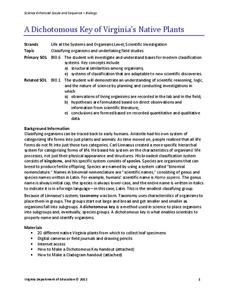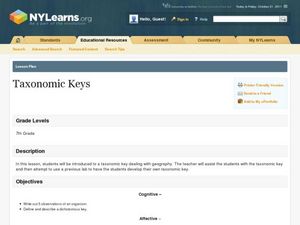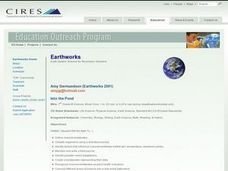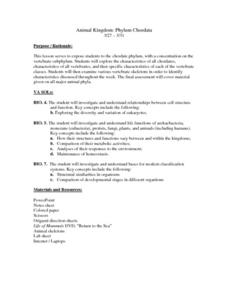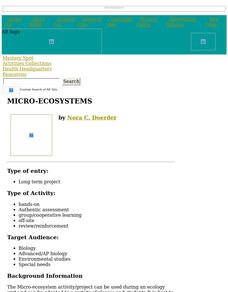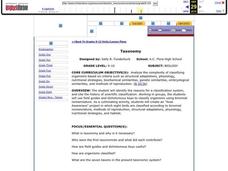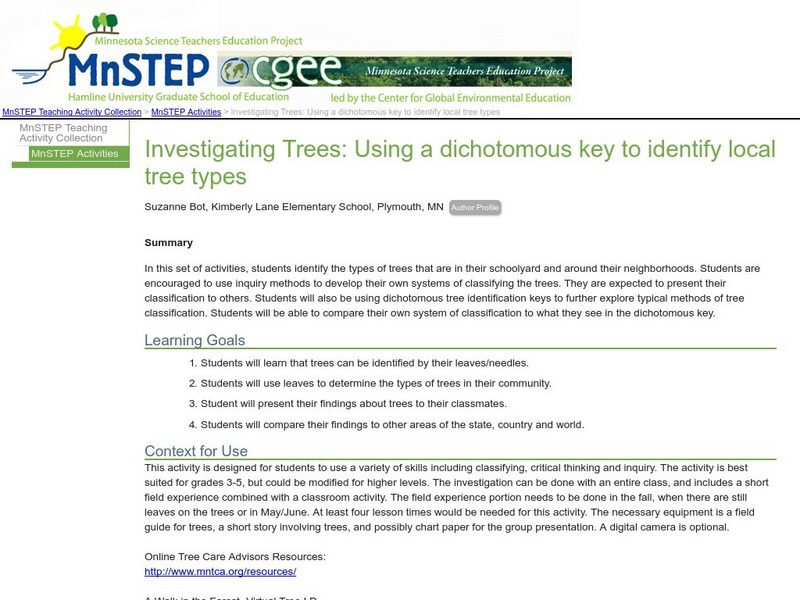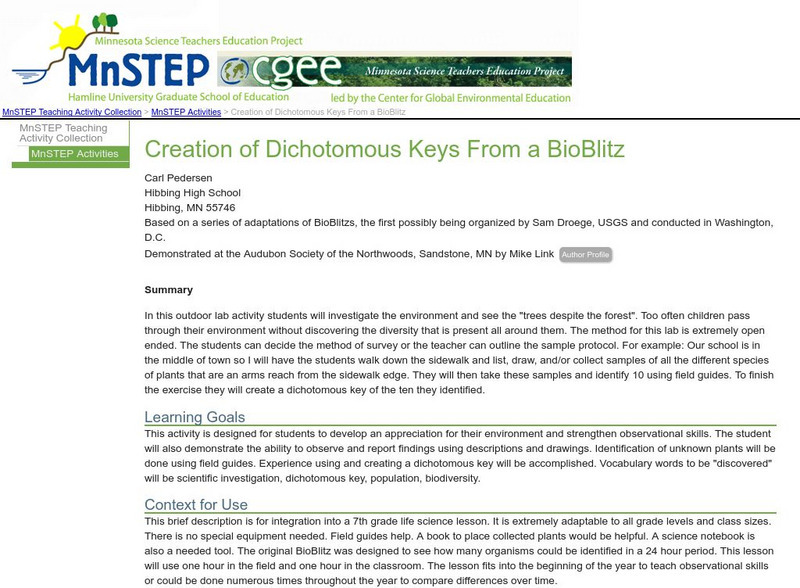Curated OER
Classification Schemes
Junior biologists journey through the hiearchy of living things with these activites. Using a dichotomous key, they identify common algae, plants, and fish. They design their own key for a mixture of seeds and a collection of...
Curated OER
Classification, Keys, and Phylogenetci Trees
Students analyze relationships about animals and create a model of classifications based on both the similarities and the differences. They also discuss a dichotomous key before they create a cladograph using different types of candy.
LABScI
Taxonomy: Who is in My family?
Find similarities in seemingly unlike organisms. The second instructional activity in a series of 12 builds the concept of a taxonomy and explores the use of a dichotomous key. Learners begin in part one by attempting to group a set of...
Curated OER
Collecting and Classifying Pollen
Students collect and analyze pollen from different species of plants. In small groups, they classify pollen according to shape, size and physical characteristics. They draw the basic anatomy of flowering plants and create a dichotomous...
Virginia Department of Education
A Dichotomous Key of Virginia’s Native Plants
Can your class correctly classify plant species? Individuals explore native plants of the local environment and correctly classify them into their respective categories. They investigate differences in the plants and discuss similarities...
Curated OER
Seeds and Trees Lesson Plan
Students investigate various tree leaves and use a dichotomous key to classify the leaves. In this leaf classification lesson plan, students study various types of leaves and their Genus. Students record observations for each Genus.
Curated OER
Taxonomic Keys
Seventh graders create their own dichotomous key. In this biology lesson, 7th graders classify animals based on their observable features. They explain how to use their dichotomous key.
Curated OER
Invertebrate Classification
Students discuss the recent disovery of the "furry lobster" to peak interest in the animal kingdom. They classify various speciments using invertebrate dichotomous keys, identifying major animal phyla and classes. Thy the complete the...
Curated OER
Pond Ecology
A lab activity is a great way to incite thoughtful questioning and scientific processes. Pupils will collect organisms with a Petri dish, make observations, sketch the organism, ask questions, then attempt to identify the specimen...
Curated OER
Freshwater Fish Anatomy & Taxonomy
Tenth graders use a classification key to identify organisms. In this classification instructional activity students identify freshwater species of fish and document their observations.
Curated OER
Into the Pond
Seventh graders use a pond to explore macroinvertebrates and other organisms. They use a dichotomous key to classify the organisms and maintain a journal recording their findings.
Curated OER
Animal Kingdom: Phylum Chordata
Students use a dichotomous key to classify various vertebrate jar speciments into classes. They examine the speciments for general characteristics of each class and fill in a corresponding chart and then complete a few final assessment...
Curated OER
Field Trip - Marine Science Institute
Pupils discover the ocean life of the San Francisco Bay. In this ocean lesson plan, students take a Discovery Voyage of the Bay ecosystem through the Marine Science Institute. Also available are inland voyages, ocean labs, and tidepool...
Curated OER
SORTING ALL SORTS
Learners examine how the method of classification is used. In this sorting instructional activity students take a pre-test, classify organisms and complete a crossword puzzle.
Curated OER
Hawaii's Freshwater Animals - Species Report
Students explore biology by creating a report for the class. In this oceanography instructional activity, students research and identify the survival characteristics of a list of freshwater animals by utilizing the Internet and library....
Curated OER
Micro-Ecosystems
Students create a sustainable, self-contained ecosystem in a ten-gallon aquarium.
Curated OER
Taxonomy
Students analyze the complexity of organism classifications based on certain criteria. In this classifying organisms activity students study taxonomy and gather information and leaves to do their own experiment on...
Curated OER
Identifying Wyoming Trees
Learners identify trees based from their leaves. In this leaf lesson plan, students use The Rocky Mountain Tree Finder by Tom Watts in order to identify tree leaves. They look for leaf shapes, veins, and structure.
Curated OER
INSECTS
Seventh graders select, collect, and classify various insects by constructing an apparatus from materials that aid in the capture and containment of the insect.
Curated OER
Digital Wildflower Collection
Students examine biodiversity and classify organisms. In this wildflower activity students go out and take pictures of plants then create a presentation to show the class.
Science Education Resource Center at Carleton College
Serc: Investigating Trees: Using a Dichotomous Key to Identify Local Tree Types
Using their own classification methods students will identify the types of trees found around their school and neighborhoods. Students will then present their classification methods to the class. Later students will use dichotomous tree...
Science Education Resource Center at Carleton College
Serc: Creation of Dichotomous Keys From a Bio Blitz
An outdoor lab where students investigate the environment and decide a method of survey to identify trees in their area. To finish the exercise they will create a dichotomous key of the ten they identified.




